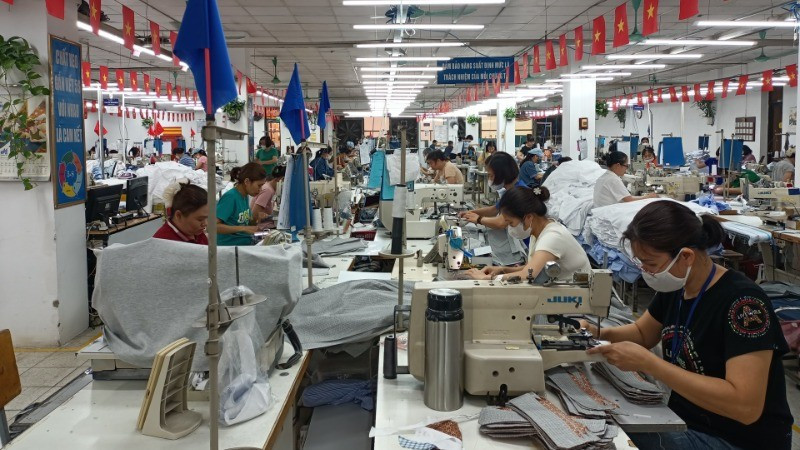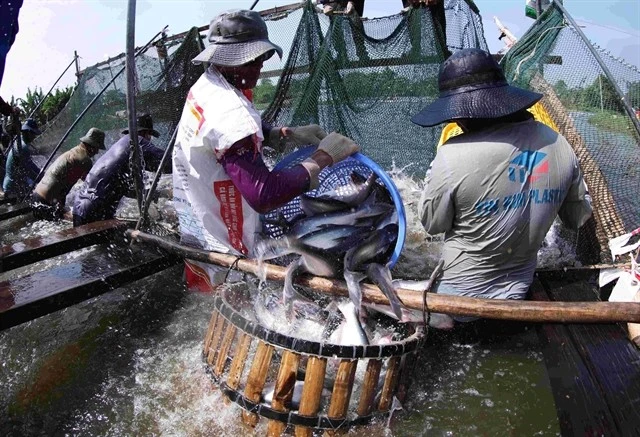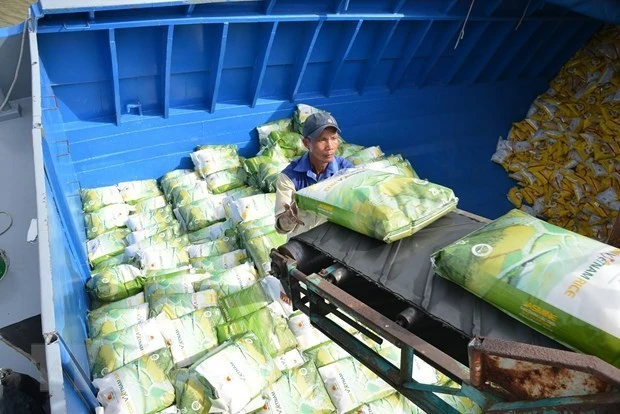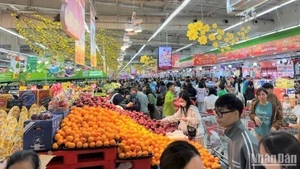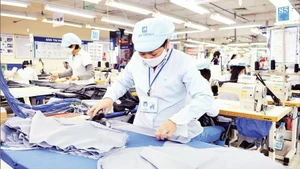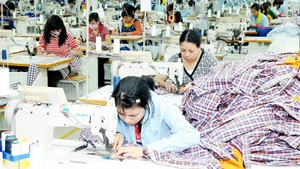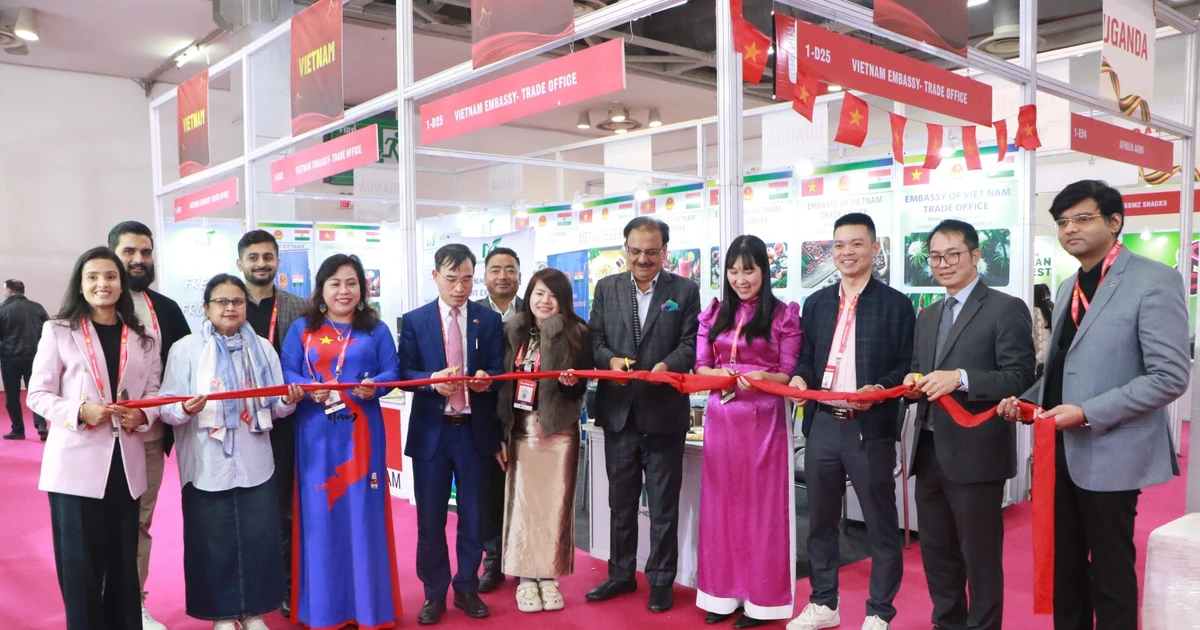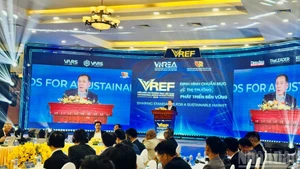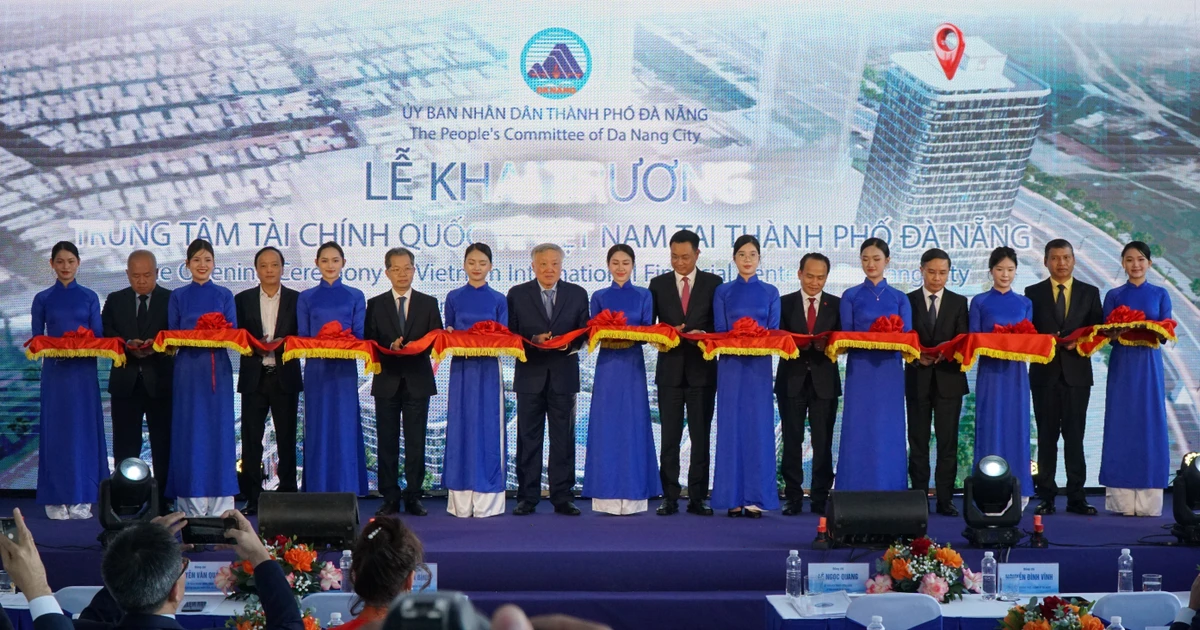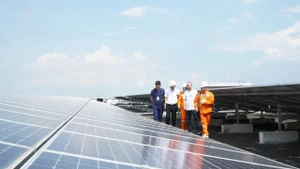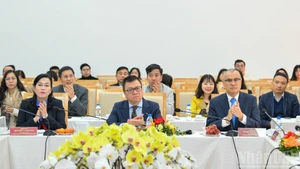Alongside this, garment makers are also implementing decisive measures to diversify markets, products and customers, thereby promoting the stable and sustainable development of the garment industry.
Currently, garment enterprises are ramping up production to fully meet customer demands while proactively developing adaptive strategies for potential tariff risks that may be reimposed by the US in the future.
Making good use of opportunities
According to Bach Thang Long, Deputy Managing Director of Garment 10 Corporation (Garco 10), when the US announced a 46% reciprocal tariff on Vietnamese goods, though not immediately implemented, it immediately impacted the entire supply chain. Some international customers temporarily suspended orders, causing production to stagnate.
However, following the announcement of the 90-day tariff postponement on April 10, the market quickly rebounded, with customers urgently requesting deliveries within short timeframes. This presents both challenges and opportunities for enterprises, requiring a rapid shift to FOB (Free on Board – purchasing raw materials, manufacturing, and selling finished products) and ODM (Original Design Manufacturing) models to increase added value.
At Garco 10, the company has proactively renegotiated with customers in the spirit of sustainable cooperation, optimised production capacity, sought alternative raw material sources, and prepared long-term contingency plans in case tariffs are reinstated.
Over the past five months, the company’s revenue has exceeded its target by 6% and increased by 15% compared to the same period last year. Current orders are secured through the end of the second quarter, with ongoing negotiations for the third quarter. However, due to fluctuations in US trade policy, some customers are temporarily holding off on decisions while waiting for clearer signals.
“Recognising the 90-day period as a critical window to fulfil major orders before July 5, Garco 10 has reorganised its production lines, implemented reasonable overtime, and launched company-wide competitions to reach key milestones ahead of schedule,” Long emphasised.
Similarly, Pham Thi Phuong Hoa, Managing Director of Hung Yen Garment Corporation, confirmed: “The entire company must focus on production to complete and deliver goods to customers by June and early July. We have planned continuous production through mid-August and are actively negotiating to secure additional orders.”
However, while order volumes in the US market are declining, market share from other destinations such as Australia, the UK, and Europe is rising and gradually shifting towards Viet Nam. Although unit prices may dip slightly in September and October, the decrease is not expected to be significant. As such, this is a golden opportunity for enterprises to ramp up production and meet annual targets ahead of schedule.
The push to concentrate production in response to US tariff policy is also being vigorously pursued by Vinatex Southern Corporation (VSC).
Nguyen Hung Quy, Managing Director of VSC, reported that the company has secured sufficient orders for production through August and is focusing efforts on early delivery to partners. The company has also proactively expanded into additional markets, including Europe and the UK. The proportion of orders from these markets in the final months of the year has increased significantly compared to earlier in the year.
“Although we’ve received price reduction requests from partners, the company has chosen not to reduce prices immediately and will wait for clearer market signals. By the end of May, once more definitive information is available, we will work with our subsidiaries to agree on appropriate cost-sharing solutions to ensure consistency in customer relations,” Quy affirmed.
Optimising profits
Recently, the International Monetary Fund (IMF) revised its global economic growth forecast for 2025 down to 2.8% (a decrease of 0.5 percentage points from January), and for 2026 to 3%, citing instability in US-China trade relations and the unpredictability of President Donald Trump’s tariff policies.
In addition, major world economies have also seen their 2025 growth forecasts downgraded: the US from 2.8% to 1.8%, Europe to 0.8% (0.2 percentage points lower than the January 2025 forecast), China to 4% (down 0.6 percentage points), and Viet Nam to 5.2%, compared with the October 2024 forecast of 6.1%.
Against this backdrop, the fact that Viet Nam’s garment export value continues to show solid growth is a positive indicator. As of May 15, garment export turnover reached 15.6 billion USD, up 9.7% year-on-year. Key export markets such as the US, Japan, and Europe all recorded growth, while exports to China declined, as this market primarily imports yarn for domestic fabric production.
Analysing current market signals, Hoang Manh Cam, Deputy Chief of Vinatex’s Board of Directors Office, noted that US-China trade tensions are easing with some agreements reached; shipping costs are falling, and the VND/USD exchange rate is showing favourable movements.
In particular, inventory levels in the US are low, with many brands holding only 6-8 weeks’ worth of stock. Pakistan, one of Viet Nam’s textile competitors, is facing political instability in its relations with India, while Bangladesh is experiencing an energy crisis that has forced many yarn factories to shut down due to power shortages, resulting in a shift of orders to Viet Nam.
However, challenges remain for Viet Nam’s garment industry, as negotiations between Viet Nam and the US have yet to yield a resolution and US tariff policies remain unpredictable. Additionally, weak consumption in markets such as the Republic of Korea and China shows little sign of recovery. Compounding the situation, increased electricity prices from May 10 are also putting additional pressure on production costs.
In light of these challenges, garment enterprises need to accelerate investment in modern equipment, enhance worker skills, improve business management, and lower operational costs to strengthen competitiveness and increase value within the supply chain.
Vinatex Chairman Le Tien Truong assessed that from now until July 10, the US may enforce temporary reciprocal tariffs on Vietnamese goods, and the results of ongoing negotiations must be closely monitored. Encouragingly, low inventory levels in the US suggest promising third-quarter order volumes. However, demand in the final quarter of the year may drop by 10% due to market contraction.
On the other hand, current tariff negotiations are being conducted by product group, creating favourable conditions for Vietnamese textile enterprises. “To ease pressure from customers, enterprises need to renegotiate with suppliers in the supply chain—including fabric producers, raw and auxiliary material providers, and domestic logistics operators—to share the burden and navigate challenges together,” Truong emphasised.
He further suggested that, to overcome this difficult period, garment companies should reinforce supply chain linkages, compile and share directories of domestic raw and auxiliary material suppliers, and prioritise the use of domestic materials when exporting to the US.
When order flows are favourable, enterprises should focus on optimising profits, aiming to meet annual profit targets ahead of schedule. This will allow them to proactively plan production, thereby reducing risks when the US potentially reinstates tariffs on Vietnamese goods in the final months of the year.
